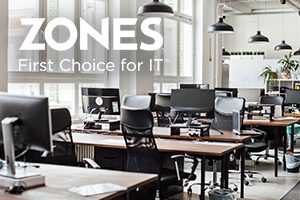Millions of employees are using outdated operating systems
It’s hardly the most glamorous aspect of workplace modernization, but it’s nonetheless one that needs to be addressed – there are far too many...
2 min read
![]() Zones
:
Oct 1, 2019 4:36:22 AM
Zones
:
Oct 1, 2019 4:36:22 AM

Amid all the workplace modernization happening in the world today, IT administrators do have one worry that remains, and that’s cybersecurity. You’ve probably seen countless scary headlines about data breaches in the news lately – and you may even have talked to those with firsthand experience with these incidents. But have you really thought critically about what the impact would be if an attack struck your business?
Turns out, an attack could be devastating. Let’s put a dollar figure on it – according to the 2019 edition of the “Cost of a Data Breach” report issued by IBM and the Ponemon Institute, the average American company affected by a breach suffers a financial loss of $8.19 million. This is the total impact, including lost customers, regulatory fines, remediation costs and much more. Now, this figure is merely an average, so the losses could be less than that for small businesses, but still, the damage is sure to be significant no matter what, especially when considering the relatively minimal investment need to protect against major breaches.
There may not be a foolproof way of preventing every data breach, but certainly, one helpful measure you can take is to update the operating systems your employees use. Consider this: According to a recent report from ZDNet, professionals who use Windows 10 on their machines rather than Windows 7 are “almost twice as secure” as their counterparts. Drawing on research from Webroot, the news outlet reported that the average Windows 7 machine has 0.08 malware files present, versus just 0.04 on Windows 10 machines.
And yet despite this, many companies remain quite sluggish to make the move to a more secure operating system like Windows 10. Webroot said the overall migration process has been “quite” slow. We discussed last month the fact that 79% of organizations still have at least one computer that’s running Windows 7 – and even scarier, 32% are still running Windows XP, even though it’s almost two decades old. And now, the clock is really ticking. Windows 7 support is coming to an end in January 2020, which means companies really need to pick up the pace and make that transition.
Security and support aren’t the only reasons that companies are making the upgrade to Windows 10. On top of that, they’re finding their employees to be more productive and ultimately add more value to the business when they have a better operating system. They’re more productive, too. Add it all up, and it’s a no-brainer that upgrading is worth doing.
Thanks to Zones, it’s easier than ever to make the transition to a better operating system. We offer OS Readiness Assessments that help you quickly size up the state of your employees’ machines and decide on the right course of action. We have the expertise needed to review your current system, check for compatibility and performance, and ultimately draw up a schedule for implementing and deploying a new OS for everyone who needs it.
We can do a lot for you when it comes to Workplace Modernization – operating system upgrades are just the tip of the iceberg. Explore our site further, and you’ll find much more.

It’s hardly the most glamorous aspect of workplace modernization, but it’s nonetheless one that needs to be addressed – there are far too many...

Across the business world, one of the most noticeable impacts of the pandemic has been a widespread increase in focus on workplace modernization....

In the modern workplace, endpoint device management has proven to be one of the most complicated aspects of workplace modernization. Deploying new...